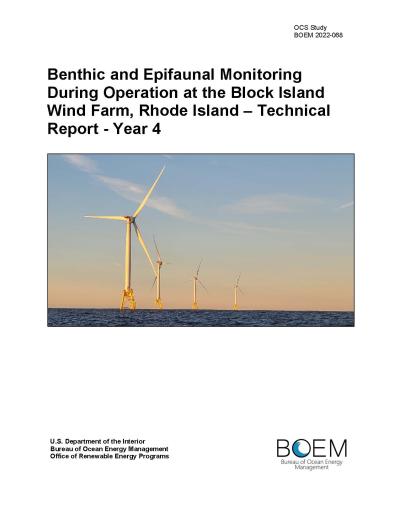Key Researchers: Robert Erickson, Chris Kelly, Mark Fonseca, Adrianna McMahon, John Tiggelaar II, Bruce Graham
The overall goal of the multi-year monitoring study at the BIWF is to better understand the nature and the potential spatial and temporal scales of the anticipated alterations in benthic macrofaunal community characteristics caused by the BIWF. Characteristics include species abundance, richness, and diversity; assemblage structure; and localized effects of structure-related macrofaunal communities on associated environments. While long-range and large-scale changes in benthic conditions are not expected from the presence of the five BIWF turbines, localized alterations to seabed characteristics near the foundations are anticipated and poorly understood
Findings
- Epifauna growth on the turbine structure is a very spatially and temporally dynamic community, with significant fluctuations over time.
- Substantial changes to the seabed sediments and faunal composition were observed only in the immediate footprint of the turbine foundations.
- Change in seabed physical and biological composition was not consistently observed at distances greater than 10 meters from the foundation base.
How BOEM will use this information
- Evaluate spatial and temporal scales of changes in benthic macrofaunal communities as a result of the presence of a structure.
- Improve understanding of ecosystem-level effects of wind facility structures on the surrounding environment.


